These harmful events are the result of a complex interplay of factors, but Bárbara Pinho talks to the researchers finding out how they form and how we can stop them
150 years ago, German farmers changed part of the landscape of the US state of Ohio. They were the ancestors of many modern-day inhabitants, including David Myerholtz, a farmer who grows corn, soybeans and wheat by the south shore of Lake Erie, near Toledo. When his ancestors arrived at the region, they found a large, uninhabitable swamp. They wanted to farm the land, and so work had to be done on cleaning and draining it first.
‘They had a lot of experience on how to drain so they found a way to just drain the land right to Lake Erie,’ Myerholtz says. So they built a drainage channel to take water to the lake. ‘Our water can get to the lake very fast because of the elevation we’re at, and the great management of streams and creeks that we’ve done.’ Yet what started with good intentions has now become a concern for local communities in the region. And that is because water flowing from farmland carries an overload of nutrients which then promote an abnormal multiplication of algae in the lake, in a phenomenon known as algal blooms.
Nuisance nutrients
Algal blooms happen when algae grow out of control in a water body, creating massive clumps of what looks like a green sludge in the water’s surface. They’re caused by various factors, but an increase in nutrients like phosphorus and nitrogen tends to be a key reason. Some of these algae produce toxins which can then cause harm to people who swim in or even drink the water, as well as to fauna and flora. The large clumps of algae consume all of the oxygen in the water and block sunlight too, meaning most aquatic beings around a bloom are at risk.
Lake Erie is no stranger to algal blooms. In the 1960s, sewage pollution was causing big blooms and policymakers had to step in. With the 1972 Clean Water Act – legislation regulating discharges of pollutants into US waters and quality standards for surface waters – the lake got healthier. However, in the past two decades, algal blooms have been returning, and with that, returned public concern.
‘The period 2005 to 2010 is when these algal blooms became a little bit more publicly known,’ Myerholtz says. The year of 2014 might linger in locals’ minds the most. By then, the city of Toledo had to cut its water supply due to the presence of dangerous toxins in the lake’s waters, all coming in from a bloom.
Algal blooms are happening more often – and getting bigger
However, looking at the size and intensity of algal blooms, this wasn’t really a notable year. ‘In the grand scheme of things, 2014 was not this massive bloom, but it just so happened to be at the wrong place at the wrong time. It just happened to be concentrated right around the water intake for the city of Toledo,’ explains Anna Michalak, director of the department of global ecology at the Carnegie Institution for Science in the US. Michalak studies how climate change affects freshwater lakes and part of her work involves studying bloom trends. She mentions that blooms in large lakes worldwide have been becoming more severe in the past decades.
The overall work of understanding trends in algal blooms is difficult. On the one hand, there are many factors to consider, and nutrients are just part of the puzzle. Weather conditions, water currents and different algae species can all affect how and when a bloom forms. On the other hand, because technology is improving, it’s difficult to understand whether algal blooms are occurring more often or if we’re just seeing them more often.
Yet various studies seem to show algal blooms are becoming a bigger problem. In a study published earlier this year, researchers used satellite information to track coastal algal blooms all over the globe between 2003 and 2020. They saw blooms were happening more often and getting bigger and attributed it to variations in ocean temperatures and circulation patterns – as well as climate change.
Climate change to blame
Like many creatures, algae thrive in warmer environments. And so, with bodies of water warming up faster than expected due to changing temperatures, blooms are expected to be bigger. Precipitation is changing in a way that makes matters worse for Lake Erie too. Michalak explains that while the total amount of rainfall isn’t changing drastically in the region, change in precipitation patterns impacts bloom formation. By looking at past climate information in the Great Lakes area as well as climate projections, her team has concluded that two main changes are happening: more rainfall is coming in the spring and more of that rainfall happens in intense precipitation events. ‘If you have these very intense rainfalls, they’re going to lead to a much more [fertiliser] runoff than if you have a sort of gentler rainfall over a longer period of time,’ she adds. ‘This is primarily a phosphorus story. But I would say it’s also a climate story.’
And so farmers like Myerholtz need to pay extra attention on how they apply fertiliser, as well as when they do so. At his farm, he’s been using a machine that injects fertiliser to soils and he’s only doing that when heavy precipitation isn’t expected. ‘We’re injecting it so that we are trying to secure it in place in a way that it’s not at the surface; it’s less vulnerable to erosion and escape from your farm,’ he adds.
But simply reducing nutrient runoff isn’t what’s going to prevent algal blooms, at least in the short-term. Michalak’s research shows there’s some internal recycling of phosphorus within the lake itself. This means phosphate that’s been in the lake for years is still being used by algae to grow today. Consequently, as farmers implement better management strategies, it’ll take several years – up to a decade – before the full benefits of those practices become visible. ‘It’s important that people like politicians understand that it’s not going to be the sort of magic silver bullet; that we do something differently one year, and magically the next year, everything is better,’ Michalak concludes.
Under the waters
When Angélica Vázquez-Ortega moved to Toledo from Puerto Rico she was saddened to see Lake Erie threatened by its blooms. ‘I don’t want to take my kids canoeing, or even rent a boat or a jet ski. It’s nasty, it’s green, it’s smelly […] It’s an amazing resource that we have, but we cannot pretty much use it for recreational purposes anymore,’ she says.
Vázquez-Ortega joined Bowling Green State University as an associate professor, and as an environmental scientist is looking for ways of working on the local landscapes. After learning more about the local land management strategies, she saw potential to recover Lake Erie’s nutritional balance by looking under its murky waters, right into the soil in its bed.
The Great Lakes are filled with harbours and channels where boats circulate all year for commercial and recreational purposes. To maintain these channels and harbours at safe depths, the US Corps of Engineers dredges the lakes periodically, meaning it removes soil from the bottom of the lakes. According to the US Army Corps of Engineers, around 4 million cubic yards (3 million cubic metres) of sediments are dredged every year from Great Lakes’ harbours – the equivalent of 400,000 truck loads of soil. Because storing all of this sediment is an expensive endeavour, various researchers are looking for ways of repurposing dredged material to do something useful with it. And this is where Vázquez-Ortega’s work comes into play.
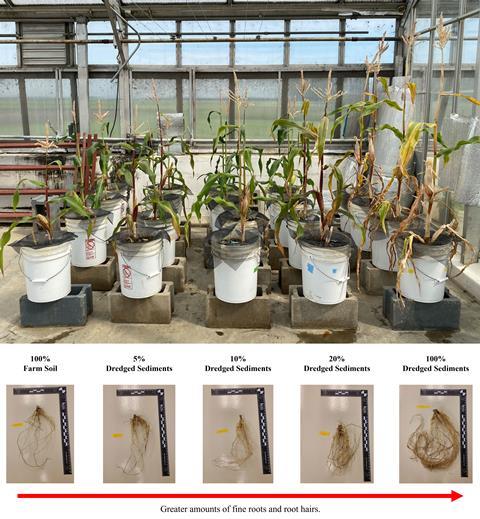
Her research focuses on using dredged materials as natural fertilisers to try to convince farmers they don’t need to use synthetic ones. So far, she and her team have used dredged materials as fertilisers in small-scale experiments inside greenhouses, growing plants in farm soil that has been mixed with dredged sediment. Her team made different blends, mixing soil with different amounts of dredged materials to study how dredged sediment impacts plant growth. And the results have been positive. ‘In the greenhouse experiments, the result has been consistent. The higher the dredge amount that I’m mixing with the soil, the higher the above biomass; the yield increases,’ she adds.
While the research is promising, two major steps are still needed. Firstly, her team will need to understand if this would be a robust replacement for synthetic fertilisers. Secondly, it’s essential that they understand if using dredged materials would actually help reduce nutrient runoff into the lake.
Vázquez-Ortega has rented a farm and will soon grow crops to address both questions. She’ll have two areas: in one she’ll manage the land as a regular farmer would and use regular fertilisers, and in the other she’ll only apply fertilisers based on dredged materials. She hopes land where she has applied dredged fertiliser will have less nutrient runoff and thus be a better option to prevent nutrient overload in nearby lakes, such as Lake Erie.
The case of ponds
Almost 1500 km away from Lake Erie, in the varied landscape of Oklahoma, other teams are battling algal blooms too, though in smaller size.
Oklahoma is dotted with hundreds of lakes and ponds, and all serve multiple communities around the state. People use them for boating, swimming, sightseeing and much more, but what worries Nick Materer, a professor of chemistry at Oklahoma State University is how these ponds are slowly becoming less useful to farmers. ‘We have a lot of livestock, maybe more livestock than people. And we have these agricultural runoffs, and they [nutrients] get in these ponds and then the ponds have algal blooms and the cattle can’t drink it,’ he explains. ‘This has a real impact here, on the agricultural community.’
Materer joined other chemists in designing an absorbent substance that farmers could easily toss into ponds to absorb the excess nutrients. Yet, Materer then got intrigued by the potential of re-using the nutrients that had been captured. ‘You have a valuable material stuck in the sorbent, so what do you do with that? You don’t want to throw it away,’ he adds.
You should be removing the excess nutrients but also making a new product
And so the scientists sought to make a material that farmers could use to capture nutrients and then apply them on the soil as fertiliser. The challenge then became to create a material that’s good at absorbing the nutrients, but not too good that it doesn’t release them afterwards. They came up with a sorbent made of aluminium and magnesium with high capacity for absorbing phosphate and nitrate, two important nutrients. The result looks like a small white bead which the team has tested in real life scenarios.
In an eight-week study, researchers grew lilies in a lab, and fertilised plants with the nutrient-enriched beads. The plants that had received nutrients from the beads grew healthily and flowered well, while the plants that had not received any fertiliser didn’t grow as much and did not flower.
The beads already have a commercial name, and Materer’s team is working on making them accessible to farmers. To him, the main goal would be that farmers include the beads in their overall management strategy: farmers would fill up the beads in the summer – when blooms tend to be more intense – and then store the nutrient-heavy beads up until the fall or spring, when they could use them in various crops. Like Vázquez-Ortega’s approach, the overall goal is to reduce the use of synthetic fertilisers and thus steadily reduce the input of new nutrients in the land, and consequently, the lakes and ponds.
‘We think that this is really where you should be going; you should be removing these materials [excess nutrients] but also making a new product, so you don’t generate more waste,’ Materer says. ‘I like the idea of having chemistry that kind of gets into that sort of a lifecycle where it doesn’t go to landfill.’
While Materer’s chemistry acts in smaller ponds like the ones in Oklahoma, a team of scientists in China has bigger ambitions.
Geoengineering done sustainably?
Lake Tai, in the Jiangsu province, China, is a testament to anthropological change. The Chinese lake is 10 times smaller than Lake Erie, but over 20 million people live on its shores in the cities of Suzhou and Wuxi, with Shanghai nearby. Wastewater, agricultural runoff and pollution as well as unprecedented population growth has changed the lake significantly in the past two decades, and algal blooms are now more common.
‘When the industrial revolution started, there were so many industries, and they were putting their wastewater directly into the rivers. They have serious problems with these issues,’ explains Jafar Ali, a postdoctoral researcher in Jilin University in Changchun, China.
Ali is originally from Pakistan, but he moved to China seven years ago to do a PhD in environmental science. He came to the country in a time when efforts had been laid out by the Chinese Government to recover water quality in Lake Tai. He joined the work of Gang Pan, now professor of environmental sustainability at York St John University in the UK, who is known in the field for creating a new way of removing algal blooms from lakes with a geoengineering approach.
Geoengineering is concerning to many. It involves interfering with Earth’s natural systems in a way that can become irreversible, so some experts believe it’s a risky method to solve environmental problems. Pan’s work is still not quite at the global scale, though. While his goal is to recover large bodies of water, his technology hasn’t cleaned complete lakes yet, but rather small pools filled with water from polluted lakes, including Lake Tai. Over the last few decades, his research team has varied, but Ali worked with him on developing and testing a series of modified local soil (MLS) materials that can be used to remove algal blooms from a lake.
‘You can simply think of MLS as soil particles combined with some natural organic compound which has some affinity towards the algal cells,’ Ali explains. The MLS particles are sprayed into the water and bind to microalgae, flocculating them into clumps that can then be removed from the lake’s water and locked in the bottom by a capping layer. The buried algal cells are degraded or collected and used as fertiliser. In a lab experiment in 2015, researchers led by Pan showed that these MLS materials effectively cleared up more than 90% of algal cells and microcystins – a class of toxins produced by certain freshwater cyanobacteria – from water collected in Lake Tai. After these positive results, the team thought of taking it a step further.
The case of oxygen
Removing algae and nutrients from the equation is crucial to better manage algal blooms, but there’s more to these phenomena. Oxygen, for example, drops to deadly levels during blooms because algae take up the oxygen available in the water. And so, Ali joined Pan’s work on killing two birds with one stone: tackling the overload of algae while oxygenating unhealthy lakes.
In theory, the job is simple. Scientists incorporate bubbles of oxygen into the MLS materials which are then added to the body of water. The organic compound binds to algae while the oxygen is released into the water. Normally, the oxygen bubble would float to the surface pretty quickly and not diffuse much oxygen, but because it is attached to the MLS particle, it slowly sinks, giving enough time for the oxygen to be diffused in the water.
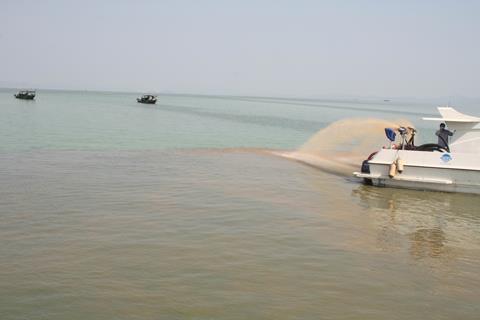
Researchers tested this approach in pools with Lake Tai’s water. They sprayed a suspension of the MLS–oxygen particles over them, except for one pool that would serve as a control. The result is striking to look at. 20 days after spraying the solution, the treated pools’ water was cleaner and no longer green with algae. Besides the visual impact, the team collected water samples from the pools and saw that treated ponds had lower concentrations of nutrients and higher levels of dissolved oxygen. Thus, the materials seem to create a healthier habitat to local fauna and flora while getting rid of blooms.
MLS has been commercialised and used in many engineering projects all around China, but never in a complete body of water. And so the question remains: could this technology clean and oxygenate a lake as big as Lake Erie?
According to Pan, the road to complete lakes seems to be a long one. He told Chemistry World that to tackle an entire lake, one needs decision makers to set up ‘mega engineering projects.’ Those take time and money, of course, so it might take a while to see a lake as big as Erie completely cleaned with MLS.
Tough conversations
Despite coming from diverse backgrounds, Vázquez-Ortega, Materer and Pan’s solutions have one common hurdle: none of their research occurs in a vacuum. Pan has dealt with policymakers, while Vázquez-Ortega and Materer have dealt with farmers. And while farmers like Myerholtz are used to working with scientists, not all are happy to see researchers using their farm.
There’s a big social aspect to this
‘It’s been a little hard to get some partners,’ Materer says. He just received funding from the US Environmental Protection Agency (EPA) to test his absorbing beads in real-life ponds in Oklahoma, but finding landowners willing to host him has been challenging. ‘As soon as you say EPA, they freak out: “Is the federal government going to come and shut down my farm?”’ he says. ‘There’s a big social aspect to this.’
Myerholtz explained that farmers’ needs must be understood. He cares about Lake Erie’s health and voluntarily participates in multiple grants and research projects to help recovering it. But he also wants people to understand that he needs fertilisers to grow crops and that he’s capable of using them responsibly. ‘I’m trying to voice the fact that we can achieve a healthier lake without a rash reduction in the use of [phosphate],’ he adds.
Vázquez-Ortega believes the path forward is by connecting everyone’s expertise, from farmers, to policymakers, chemists and environmental agencies. And when people with different backgrounds need to work together, someone has to adapt.
‘I’m a city person. I don’t know anything about my way around a farm, but as soon as I get my boots out, I think they [farmers] can really understand me,’ Materer says.
Bárbara Pinho is a science writer based in Porto, Portugal
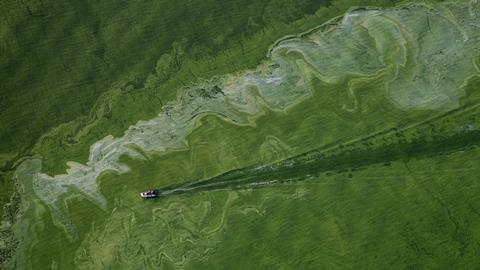





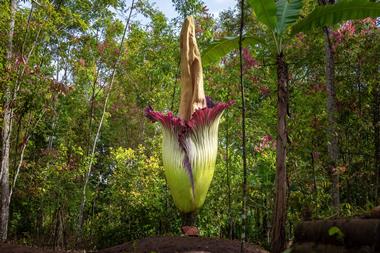
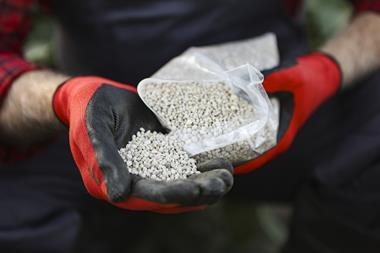

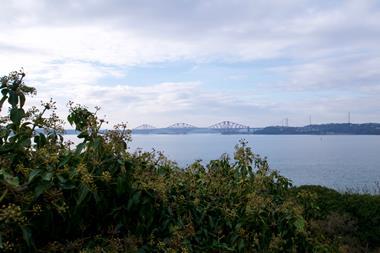








No comments yet